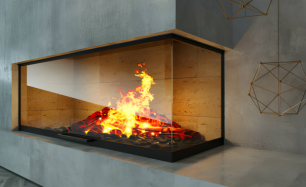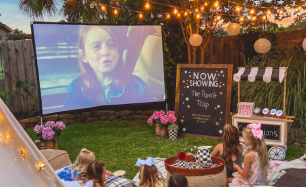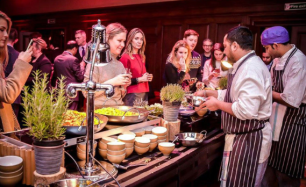The Art of Conversation: Fostering Meaningful Interactions Among Guests
A great event isn’t just measured by the food, music, or decor—it’s remembered by the connections made and the conversations shared. Whether you’re hosting a formal dinner party, a relaxed networking event, or a casual gathering with friends, your ability to create an environment where people truly engage with one another is what transforms a gathering into something memorable.

But meaningful conversation doesn’t always happen by chance—it’s an art that can be encouraged and cultivated. With a few intentional strategies, you can help guests go beyond small talk and form real, lasting connections.

Set the Tone with a Warm Welcome
First impressions matter. As the host, your energy sets the tone. Greet guests personally and make quick introductions when they arrive. Instead of just naming people, offer a small detail that sparks connection:
“This is Sam—he just got back from hiking in Peru,” or “This is Layla—she’s a designer and also makes incredible sourdough.”
A thoughtful introduction instantly gives guests something to talk about and makes everyone feel seen and included.
Curate the Guest List with Intention
Meaningful conversation is more likely when there’s a mix of personalities, backgrounds, and interests. Avoid clustering only familiar faces—diverse groups encourage curiosity, new connections, and unexpected conversations.
If you’re planning a seated event, consider mixing extroverts and introverts, creatives and analytical thinkers. Think about who might benefit from meeting each other, or who might hit it off based on shared values or experiences.
Create Conversation-Friendly Spaces
The physical environment plays a huge role in how people interact. Arrange seating or standing areas in smaller group-friendly formats. Avoid placing all the seating against walls or clustering everything in one central spot.
Low lighting, soft background music, and comfortable furniture all contribute to a relaxed atmosphere where guests feel comfortable opening up. Make sure there’s enough space for people to move around easily—mobility encourages mingling.sound check in your event space beforehand. Even the best playlist can fall flat with poor sound quality or volume control.

Offer Conversation Prompts (Without Being Awkward)
Sometimes people just need a nudge. This doesn’t mean formal icebreakers, but subtle prompts can work wonders.
Consider:
- Placing interesting books, conversation cards, or objects on tables.
- Including questions on place cards or menus like “What’s your dream travel destination?” or “What’s one skill you’d love to master?”
- Introducing light, inclusive group games or a communal toast to invite shared moments of interaction.
The goal is to make it easy for people to shift beyond surface-level talk and into something a bit more personal or fun.
Model Meaningful Conversation Yourself
As the host, your own style of communication will influence others. Ask open-ended questions, listen actively, and show genuine interest. Avoid dominating conversations—invite others in and make space for everyone to speak.
Instead of “What do you do?” try:
- “What’s keeping you inspired these days?”
- “Have you seen or read anything lately that made you think differently?”
- “What’s something you’ve always wanted to try but haven’t yet?”
Questions like these spark curiosity and invite storytelling, which leads to deeper, more memorable exchanges.
Encourage Cross-Pollination
Help guests rotate and connect with different groups throughout the event. You can do this naturally by changing the setting—move from cocktails to dinner, then from dinner to dessert or drinks in another space. With each shift, gently encourage new groupings or fresh introductions.
If you sense someone is lingering alone, invite them into a conversation. If two guests are talking enthusiastically, leave them to it—you’ve succeeded in your mission.
Know When to Let Silence Breathe
Not every moment needs to be filled. Let guests settle into quieter rhythms or enjoy the mood without constant engagement. Sometimes the most meaningful interactions come after a shared pause or reflective silence.
As host, read the room—step in when needed, and step back when the conversation is flowing on its own.
Send Guests Home Feeling Connected
End your event with gratitude and a personal touch. A simple thank-you, a shared moment of reflection, or a follow-up message the next day can leave a lasting impression and reinforce the connections made.
If you introduced two people who hit it off, follow up and say so. These small gestures deepen relationships and let guests know their presence mattered.
Final Thoughts
At the heart of every great event is not just what people do, but how they connect. Fostering meaningful conversation is about creating a space—physically and emotionally—where people feel seen, safe, and curious. It’s less about orchestrating dialogue and more about setting the conditions for connection.
With intention, empathy, and a little hosting finesse, you can create moments of conversation that your guests will remember long after the music fades and the lights dim.





